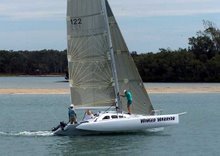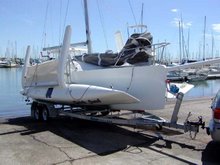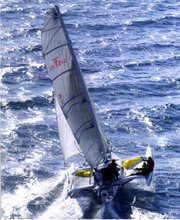
After a long wait I can get on with the beams. I need to cut open the drains i made in the bulkheads. There are 10 in each beams, so a good metod was needed: I first cut with the Fein cutter.

It can cut pretty close. Damn good tool.

I clean up the hole with the strait grinder. This is also an excellent tool, and cheap to (Biltema for those readers living in Scandinavia). Works much better than the Dremel wannabees I tried.

I also had to install the end caps for the UPS pin. First cut to size, securely fastened, you cannot hold a carbon laminate this small size with your fingers. (oucch%&€#"!?§§)

The entry side is opened up to accept the pin (19 mm) Big drill needed!

Preinstall to see that all fits before messing with epoxy.

I needed a pulller to get the pin out. In the book Ian Farrier writes the pin should be able to rotate (yeah man with some force it will.)

The two caps are glued in place with the waxed pin in place. Also the plastic tube is fitted to prevent water enter the beam.
After the glue had cured I had to really blow the puller hard to get the pin out, even with several layers of wax.



































